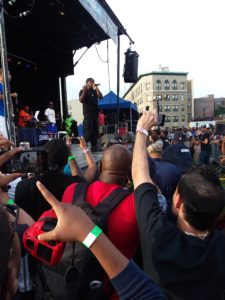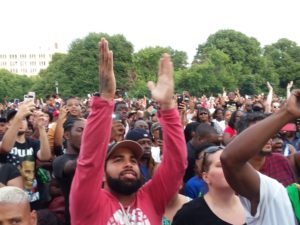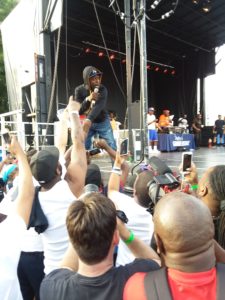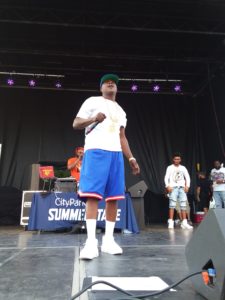Erykah Badu
Early in her career, Badu was recognizable for wearing very large and colorful headwraps. For her musical sensibilities, she has often been compared to jazz great Billie Holiday. She was a core member of the Soulquarians, and is also an actress having appeared in a number of films playing a range of supporting roles in movies such as Blues Brothers 2000, The Cider House Rules and House of D. She also speaks at length in the documentaries Before the Music Dies and “The Black Power Mixtapes”
Erykah Badu was born Erica Abi Wright in Dallas, Texas on February 26, 1971. Her mother raised her, her brother (Jabbada), and her sister (Nayrok) alone after their father, William Wright Jr., deserted the family early in their lives. To provide for her family, the children’s grandmother often helped looking after them while Erykah’s mother, Kolleen Maria Gipson (Wright), performed as an actress in theatrical productions. Influenced by her mother, Erykah had her first taste of show business at the age of 4, singing and dancing with her mother at the Dallas Theatre Centre. Erykah Badu was the owner of Focal point in Dallas, Texas.
By the age of 14, Erykah was free-styling for a local radio station alongside such talent as Roy Hargrove. In her early youth, she decided to change the spelling of her name from Erica to Erykah, as she firmly believed her original name to be her slave name. The term ‘kah’ signifies the inner self. Badu is her favorite jazz scat sound and is also an African name for the 10th born child used for the Akan people in Ghana.
Upon graduating from Booker T. Washington High School for the Performing and Visual Arts, Badu went on to study theater at the historically black college Grambling State University. Concentrating on music full-time, she left the university in 1993 before graduating and took on several minimum wage jobs to support herself. She taught drama and dance to children at the South Dallas Cultural Center. Working and touring with her cousin, Robert “Free” Bradford, she recorded a 19-song demo, Country Cousins, which attracted the attention of Kedar Massenburg, who set Badu up to record a duet with D’Angelo, “Your Precious Love,” and eventually signed her to a record deal with Universal Imperial Records.
After 10 years as a vegetarian, Badu became a vegan in 2006: “Vegan food is soul food in its truest form. Soul food means to feed the soul. And to me, your soul is your intent. If your intent is pure, you are pure.” Badu splits her time between Dallas, Texas and Fort Greene, New York.
In 1995, Badu became involved with rapper André 3000 of OutKast, with whom she had her first child, a son named Seven Sirius Benjamin, on November 18, 1997. Their relationship ended sometime in 1999. Their relationship inspired André 3000 to write the song “Ms. Jackson”.
In 2000, Badu was in a romantic relationship with fellow Soulquarian Common; their relationship ended in 2002. On July 5, 2004, Badu gave birth to a daughter, Puma Sabti Curry; Puma’s father is West Coast rapper The D.O.C., originally from Dallas. On February 1, 2009, Badu gave birth to her third child, a girl named Mars Merkaba Thedford, with her boyfriend of five years, rapper Jay Electronica.




